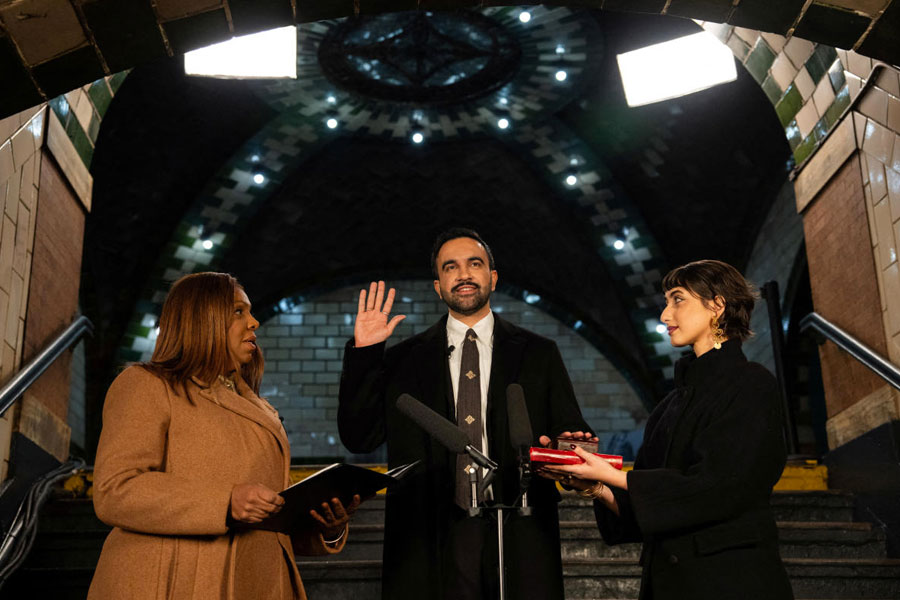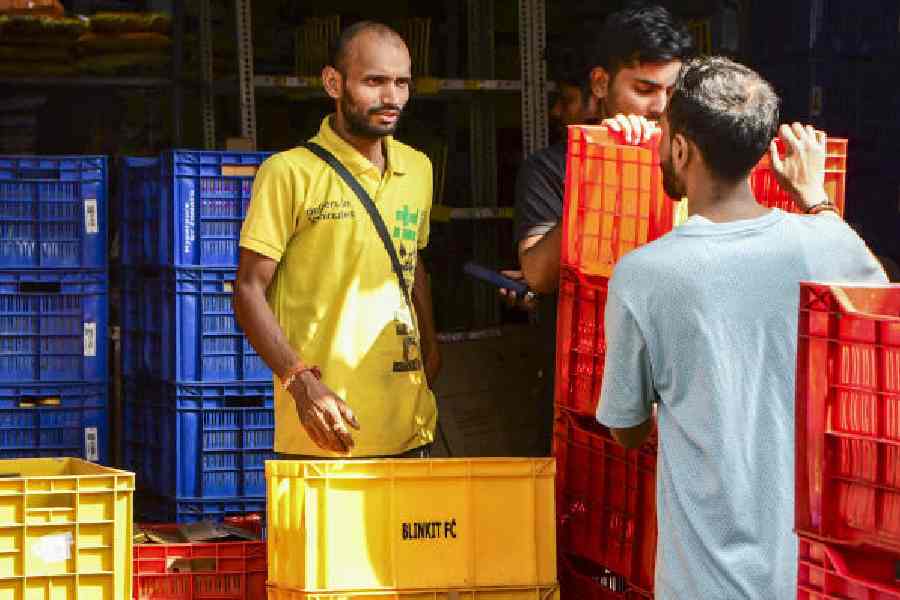 |
 |
 |
 |
 |
| 1 The Chilika Lake during sunset 2 A view of the Kalijai temple 3 Boats on the lake 4 Flamingoes wade through the water 5 Tourists enjoy the view. Telegraph pictures |
Bhubaneswar, July 18: Breakfast, Honeymoon, Somolo and Beacon. If these names tingle your tastebuds, try using some of your other senses. These are not culinary delights but dainty islands that add to the charm of Chilika, the largest brackish-water lake in Asia.
Islands in the lake: For ages, the Chilika Lake has been a source of inspiration for Oriya literature. Its beauty and the migratory birds found near the lake find mention in the poetry of Kabibara Radhanath Ray or the verses penned by Utkalmani Gopabandhu Das. But many might have not heard of its beautiful islands.
Officials of the East India Company discovered scores of such islands in Chilika and used them as summer retreats. A clutch of such islands is now under the jurisdiction of the revenue department of Ganjam district.
“Chilika’s wealth is unmatched. Though migratory birds come from places as far as the Caspian Sea, Lake Baikal, Aral Sea and other parts of Runia, Kyrghyz Steppes and Mongolia, Central and South East Asia, Ladakh and the Himalayas, its islands are unique in their own way,’’ said the chief executive of Chilika Development Authority, Ajit Kumar Patnaik. He added that the historical importance of the lakes is also considerable.
Honeymoon Island: Situated in the Rambha Bay near Sanakuda Island, it lies at a distance of 5km from Rambha jetty. Also known as Barkuda Island, for the British it was a picnic spot. The water around the island is clear and turquoise blue in colour. Annandale and Kemp discovered the limbless lizard on this island.
Breakfast Island: This pear-shaped island in the Rambha Bay lies between Badakuda and Somolo islands. It is also known as Sanakuda Island. the King of Khallikote constructed a bungalow was constructed on this island. Snodgrass, the then collector of Ganjam, used to frequent this bungalow. This lush green island was home to Casupourea ceylanica, a mangrove associate. Vegetation on this island now is sparse.
Beacon Island: Located 3km away from Rambha, this island has an Orissa Tourism Development Corporation (OTDC) bungalow, which is an architectural marvel with a conical pillar and a small room constructed on a submerged mass of rock in the Rambha Bay near Ghantasila Hill. Snodgrass, the then collector of Ganjam under the East India Company, built it. The ornamental pillar was constructed to put a beacon on the top. The water around the Beacon Island is breathtakingly beautiful.
Somolo and Dumkudi islands: Situated in the central and southern sectors of the lake, these islands are remnants of the Eastern Ghats. Though rocky, they are rich in flora and fauna. Dolphins are often sighted in the peripheral waters of the Somolo Island. The Khallikote hill range provides a beautiful backdrop to Somolo Island.
Birds’ Island: Comprising of a small hillock with huge exposed hanging rocks, it is situated in the southern area of Chilika, at a distance of 4km from Rambha tourist bungalow and a kilomtere from the eastern side of Ghantasila Hill. The granite rocks are the remnants of Eastern Ghats. Some of the rocks are painted white with the droppings of birds. Some local birds use the island too. During winter, migratory birds are sighted here in large numbers.
Parikud Island: This composite island along the eastern side of Chilika was originally known as Old Parikud. Collectively known as the Garh Krushna Prasad block, it is an ideal spot for nature lovers during winter when migratory birds are found in abundance.
 |
Kalijai Island: Kalijai temple, situated on this island, is considered the abode of goddess Kalijai. There is a popular folktake, which makes the jaunt even more interesting.
Barunkuda Island: It is a small island situated near Magarmukh. It has a temple of Lord Varuna.
According to tourism office sources in Bhubaneswar, the state government had taken up a project to provide a facelift to seven islands — namely, Breakfast, Honeymoon, Somolo, Birds, Ghantasila, Chhalikakuda and Gopakuda with Rs 45.8 crore for an eco-development project.
Walk in the wild
Chilika is famous both for its migratory winged guests and Irrawady dolphins. While the Nalabana Chilika Sanctuary (15.53sqkm) is designated as a protected area for the migratory birds, the Satapada region is famous for the largest population of dolphins in the lake.
While Chilika has 158 Irrawady dolphins, Satapada has 80-90 of them. Thousands of tourists flock to the region to watch the dolphins. According to Chilika divisional forest officer (DFO) Bimal Acharya, the tourist who come to see the migratory birds, come in from October till March.
Tourists, whose main interest lies in watching the dolphins, come in round the year. The mouth of the Chilika near Ramabharatia or Sipakuda is an added attraction for tourists.
Also, the Bhabakundaleswar temple near Satapada is a famous site for historical reasons and its association with the Jagannath cult.
“According to the legend, a woman from the milkmen’s community, Manika, served buttermilk to Lord Jagannath and Lord Balabhadra. The Lords also gave her a gold ring but sepoys asked her how she got the ring. Based on this folklore, Bhaba Kundaleswar temple was built. The temple draws huge numbers of Jagannath devotees,” he said.
“Most of the tourists coming to Nalabana Sanctuary to watch the birds are unaware of the islands. A few foreign tourists visit these islands after reading about them,” the DFO added.
Ready reckoner
While Satapada is 110km away from Bhubaneswar, the bird-watching area near Nalabana can be approached from the Balugaon side, which is 90km from Bhubaneswar. It can also be reached by rail. At Nalabana you can see the birds from the waterfront, while the winter guests can be watched from road from the Tangi-Mangalajodi side. The lagoon, the largest of its kind in Asia and a designated Ramsar wetland, sprawls across 1,100sqkm in the monsoon. In summer, it reduces to 965sqkm. The OTDC-run Panthanivas are found at Barkul and Rambha, boats can be hired from the corporation and private operators. Recently, OTDC also introduced a luxury boat for tourists. Chilika is famous for picnic spots such as Narayani and Nirmalijhara and the temples of Bhagabati and Dakshya Prajapati near Banpur.











